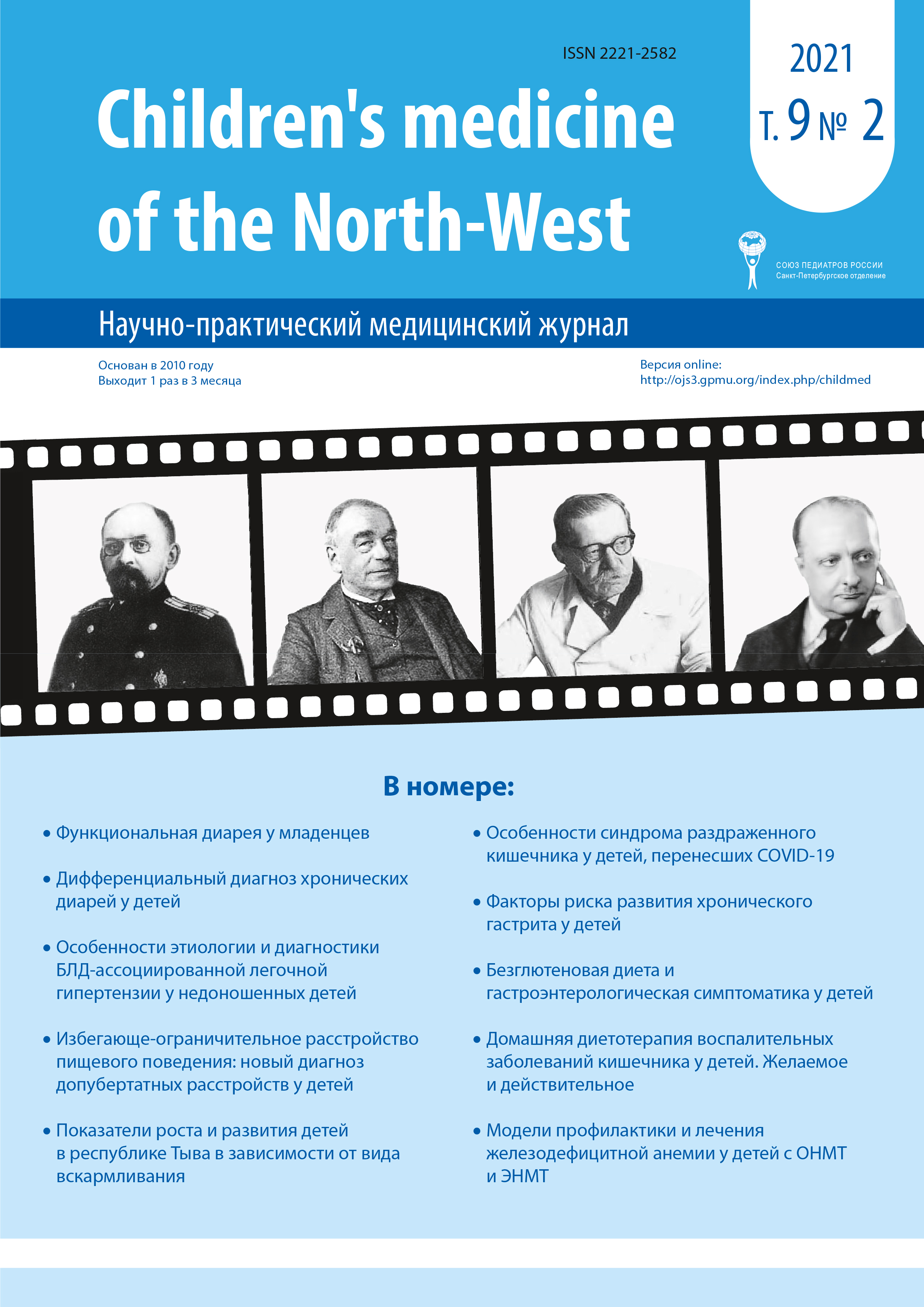INDICATORS OF GROWTH AND DEVELOPMENT OF CHILDREN IN THE REPUBLIC Tyva DEPENDING ON THE TYPE OF FEEDING
Abstract
It has been established that the type of feeding in the first year of life has an impact on the health of the child in the subsequent years of life. Purposes and tasks: to identify the prevalence, duration and impact of mother’s breastfeeding on the growth and development of children in the Republic of Tyva. Material and methods. A survey and analysis of medical documentation of 2458 children (1785 Tuvans and 673 preschoolers of the newcomer population) aged from 3 to 7 years attending preschool educational institutions in Kyzyl was carried out. The assessment of physical development is given according to the standards “WHO Growth Reference 2007”; the level of biological development - according to the dental formula. Results. The prevalence and duration of breastfeeding among Tuvinians was higher than among children of the immigrant population (p<0.001). At the age of one year, children who received mother’s breasts for more than 6 months more often recorded harmonious physical development (47.3%) and body weight deficit (29.3%) than children who received milk formula (40.6% and 12.4%, respectively; p=0.005). Overweight children were the same for all types of feeding. At the time of the survey, the body weight deficit in children weaned from their mothers earlier than 3 months of age was observed more often (28.0%) than in their peers who received breast milk for more than six months (10.5%; p=0.002). Overweight was more often observed in preschoolers who received their mother’s breast for more than 12 months (43.0%) than in children who were early transferred to artificial feeding (30.5%; p=0.01). The number of preschoolers with harmonious physical development did not depend on the type of feeding. Conclusion. We have revealed the influence of the duration of breastfeeding on the physical development of children, which manifests itself not only during the first year of life, but also in preschool age.



